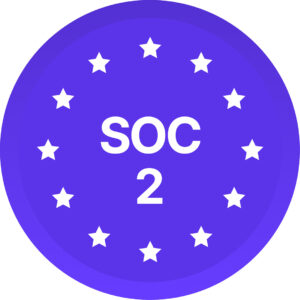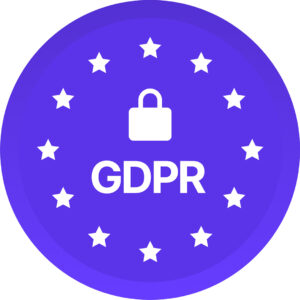The term microaggression was first used by professor Dr. Chester M. Pierce in the 1970s to describe the ways he saw white students subtly dismissing and putting down Black students at Harvard. The term saw a revival in the 2000s and 2010s as people became more aware of how their actions impacted populations differently.
Discussions about microaggressions highlighted the fact that bias, discrimination, and racism are not always overt and obvious or even consciously intended. Since the term was first developed, society has recognized that there are different types of microaggressions — including environmental.
Related:
What are environmental microaggressions?
The environment where we work or spend time carries many cues about what a culture considers to be so-called “normal,” and in some cases this “normal” includes subtle biases and inequities that position one group as more valued than another. Environmental microaggressions refer to systemic problems where the physical place is structured in such a way that it makes one or more groups feel invalidated.
Environmental microaggression examples
Environmental microaggressions can vary depending on the situation. In many cases, they are created by tradition or outdated approaches or environments. For example, a community center may have been set up in the 1900s and not been updated or reconsidered since then. Some colleges were founded centuries ago and may have ingrained biases in their traditions or even their physical campuses. It can be difficult to conceptualize an idea, especially if it’s new, so let’s look at a few examples of environmental microaggressions.
Environmental microaggressions can be expressed in the physical environment, but they can also come from the workplace or even from other users of the space. In healthcare environments, for example, staff often face situations where microaggressions specific to their workplace occur. That is, these events happen specifically because of the medical setting and the patient’s expectations in that setting.
Microaggression examples in schools
- School buildings, statues, & structures that are named primarily after white donors
- Honored alumni & professors represented in artwork or honors at the school are primarily white & male
- School catalogs & marketing materials featuring photos of students that don’t reflect the school’s diversity
- School holidays based on Christian or customary traditions that don’t take other cultural or religious holidays into consideration
Microaggression examples in healthcare
- Female doctors who enter a room to speak with a new patient are assumed to be nurses rather than physicians
- Male nurses hear comments from patients about their gender & their role
- Patients may want to see doctors from certain ethnic or racial groups because they assume they are more qualified
- Patients may not want to work with some doctors or nurses because of their race or gender
- Patients may ask nurses or doctors who are visible minorities where they went to school or may ask to see their qualifications
These lists are only examples within specific industries. Microaggressions can happen in any industry and any workplace, and they can take many more forms than it is possible to list here. However, these examples hopefully give you a sense of what microaggressions could look like in two different environments.
Environmental microaggressions can occur outside workplaces, too. In communities, troubling examples of microaggressions include communities where large stores don’t want to open shops because of a perceived threat of crime. In some “food desert” communities, there is an excessive number of liquor stores and fast-food restaurants but few stores selling fresh food to residents. Additionally, Black U.S. residents are 75% more likely to live near an industrial site. This difference in exposure to pollution stands even when income is accounted for. These are all examples of environmental microaggressions.
How can organizations prevent microaggressions?
Preventing microaggressions starts with a commitment to addressing the problem and buy-in from leadership and management. The process involves targeting issues in the workplace, including those less obvious forms of microaggressions that may have become customary, and changing the structure and the way an organization “does business.” You may want to:
- Offer microaggression training. Training should be non-judgmental & should not make anyone feel singled out. Instead, define microaggressions & stress that examples of microaggressions include unintentionally hurtful actions, words, or even structures. Offer specific examples & offer participants a chance to ask questions & discuss the topic.
- Take a look at your environment. Over time, we all become accustomed to our surroundings, so try to look with a fresh perspective.
- What are the names & words used in your workplace on conference room doors, buildings, & other spaces?
- If images, artwork, or photos containing people appear in your workplace, do the people represented reflect the diversity of your community or company?
- Do any images of people in your ads reflect your diversity?
- Do your videos & training materials reflect diversity?
- Are all spaces in your buildings accessible for those living with a disability?
- Ask for feedback & be ready to listen. Leadership may not have noticed environmental microaggressions, but team members may have & may have simply never had the space to discuss it. Conduct anonymous surveys or ask for feedback to find out what parts of the workplace may feel less than inclusive.
- Help all users of your space avoid microaggressions. Some hospitals & health facilities are placing prominent signs, indicating what behavior & wording is & isn’t appropriate with staff. This can help stem certain behaviors. Offering microaggression training to partners & others who use your space can be useful & it can be useful to start discussions in your workplace about productive & safe ways to deal with microaggressions when they happen.
Preventing microaggressions can be challenging for some workplaces because this is a topic that can lead to defensiveness. Some individuals may not understand how they can be asked to change behaviors or systems which aren’t consciously meant to be unwelcoming. It’s important to remain committed and to keep the conversation open.
How does preventing environmental microaggressions support DEI?
Microaggressions can lead to a less inclusive and ultimately less diverse workforce because they send subtle unwelcoming messages to some groups and individuals. Over time, some workers may choose to resign rather than remain in a space where they feel unincluded. That said, addressing microaggressions head on can lead to defensiveness, and this issue can divide workplaces, negatively impacting culture.
Preventing microaggressions, on the other hand, helps create a more comfortable workplace for everyone. It can also encourage team members to stay because they feel respected, valued, and part of the team. A workplace where everyone feels they belong also is stronger culturally and also more trusting.
How can Diversio help?
With its advanced AI-powered tools and real-time people analytics, Diversio equips you with the insights needed to identify and address subtle biases, microagressions and systemic inequities in your environment.
Metrics-driven insights
- Diversio Dashboard: Monitor your DEI progress with our interactive dashboard, offering a clear overview of your organization’s performance and areas for improvement.
- Inclusion Score™: This single, comprehensive metric allows you to benchmark your DEI efforts against industry standards, providing a clear target for improvement.
Advanced sentiment analysis
Sentiment Analyzer™: Identify microaggressions and other subtle forms of bias within your organization. This tool helps you understand the real-time sentiment of your employees, ensuring you can address issues promptly.
Customized recommendations
AI-Powered Recommendation Engine™: Receive tailored, actionable steps to enhance your DEI strategy. These recommendations are based on your specific organizational needs and challenges, ensuring they are relevant and effective.
Comprehensive employee engagement surveys
Conduct frequent and tailored surveys to capture the unique sentiments and experiences of your employees. This flexibility allows you to stay attuned to the evolving dynamics of your workforce.
- Real-Time Feedback: Gather timely insights into the effectiveness of your DEI initiatives, allowing for quick adjustments and continuous improvement.
DEI consulting & training
Access personalized support from Diversio’s team of DEI and people analytics experts. They provide guidance on best practices, helping you navigate the complexities of DEI implementation.
Enhance your team’s DEI competencies through evidence-based training and certification programs, ensuring that DEI principles are deeply embedded in your organizational culture.
Addressing the nuanced challenges of DEI management with Diversio’s sophisticated tools will help you create a more inclusive, equitable, and welcoming environment. With Diversio, you can transform your DEI strategy into a competitive advantage, driving meaningful and sustainable change.
Book a demo to find out how.

